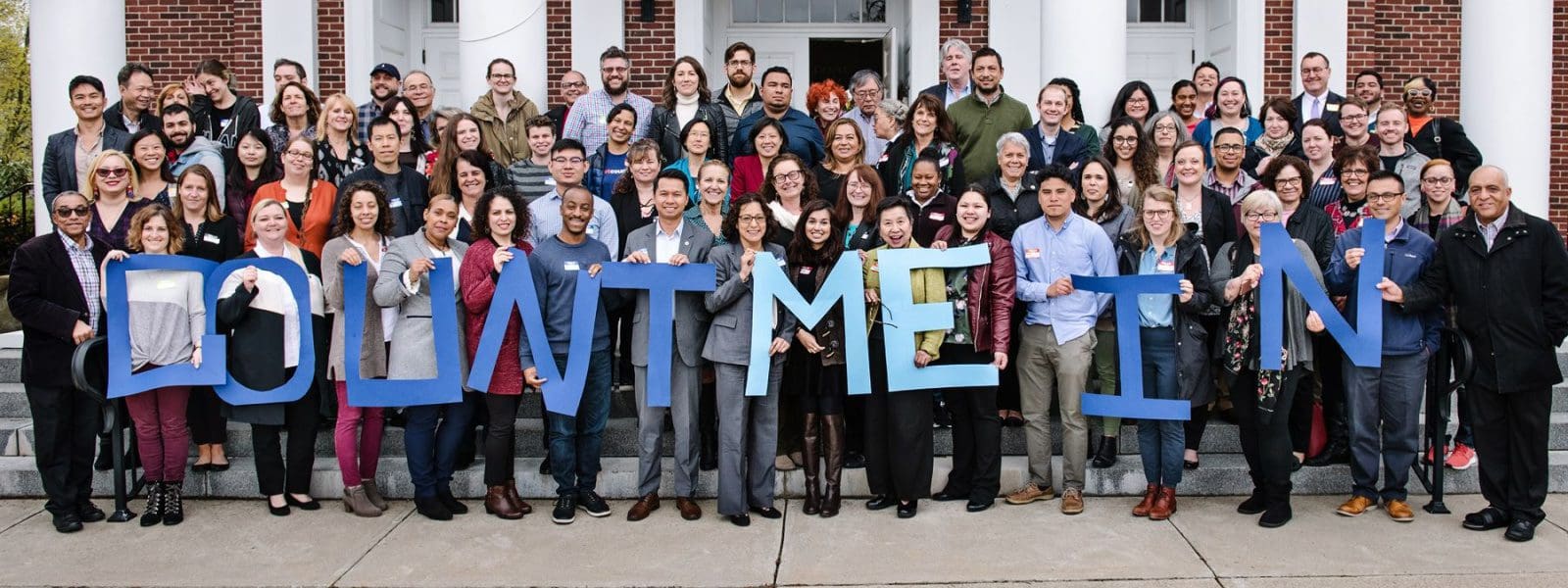The following is a guest blog by Katie Spiker, National Skills Coalition. The blog is a component of the Nonprofit Infrastructure Investment Advocacy Group’s (NIIAG) Civic Infrastructure Week of Action to secure federal investments in civic assets that enable nonprofits to fulfill their missions of building equitable communities.
To be successful, we must invest in skills training at the same time we invest in physical infrastructure. Infrastructure is inherently people-centered; built for the people, by the people. Washington cannot focus recovery efforts around one without equal consideration for the other. Therefore, any investments made to physical infrastructure must include investments in training – so people have the skills they need to access jobs and so business has a pipeline of skilled workers.
We can’t pay to build a new bridge and just keep our fingers crossed that hundreds of skilled workers will show up to build it. Skilled welders, construction crews, and IT professionals don’t just magically appear. They must be trained at our community colleges and in our workforce system – and that doesn’t happen by accident. It happens because we intentionally invest in people’s skills training, education, and career pathways. Not incidentally, these investments must serve people of color, women, and other communities that have historically been excluded from good careers in infrastructure. Industries hardest hit by the pandemic (like hospitality and retail) employ large percentages of these populations. Any worker forced to change careers, especially to one in infrastructure, will need significant retraining to do so.
Infrastructure investments lead to job creation. Modernizing, repairing, and maintaining our infrastructure today could create millions of jobs over the next few years. ASCE estimates we would need a $2.6 trillion investment in our infrastructure just to bring our grade from C- to B-. Recent analysis by the Georgetown Center on Education and the Workforce found that a $1 trillion investment in infrastructure could create up to eleven million new jobs. Estimates suggest that $1 billion invested in Federal highway and transit alone would create thirteen thousand jobs.
Job creation alone isn’t enough. For the 10 million workers out of work today, infrastructure job creation could be a pathway back to economic security. And construction, manufacturing, and energy sectors were reporting workforce challenges long before our current crisis. An infrastructure package could help us meet these challenges head-on. But not without training. Many people don’t realize that job creation packages don’t automatically include investments in training. Nearly half of all jobs created by a $1 trillion infrastructure package would require some form of postsecondary education or training.
Of those 10 million currently unemployed workers, more than 40% have no education past high school. These numbers are even more stark for people of color and women, who have less access to postsecondary education and have suffered disproportionate job loss during the pandemic. Community colleges, apprenticeship programs, and other training providers would shoulder the burden – programmatically and financially – to meet that new demand. Washington must give equal consideration to these factors for any recovery package that includes infrastructure investments.
We need people-centered infrastructure that meets industry demand. “People-centered” means ensuring federal funding prioritizes investments that modernize our infrastructure and help upskill and reskill America’s workers. It focuses on women and people of color – workers most impacted by Covid-19 and historically excluded from infrastructure jobs. The plan would invest in training, supports, and digital skills for workers who need access to good jobs. It supports partnerships between industry partners, educators, the public workforce system, labor, and human service organizations at the local level. And it would measure the impact of federal dollars spent today to ensure equitable outcomes from these investments tomorrow.
Disparities have wide-ranging effects beyond workforce development. In a recent report, The Roadmap for Racial Equity: An imperative for workforce advocates, National Skills Coalition explores the racial and ethnic disparities in educational attainment and access; systemic barriers to equitable workforce training and quality employment; and why advancing equity is an economic and moral imperative. The ethnic and racial diversity of the residents of the United States of America is one of the country’s unique strengths; however, communities of color face wide racial inequities in educational attainment, employment, and income.
Immigrants, the majority of whom are people of color, face similar inequities in their educational and employment opportunities. The United States has fueled these disparities through decades of intentional, structurally racist policies, including those that have shaped postsecondary education and training. There are huge implications of these disparities for people, businesses, and our economy. Every person and every worker in the country deserves a fair shot at achieving economic stability and success. This is the right aspiration, especially for a country that professes the ideals of liberty and justice for all.
Racial equity is an economic and moral imperative. Additional workforce policies are needed now to counter decades of intentional, structurally racist policies and advance racial equity in educational attainment, employment, and income. As long as these disparities exist, the country is undercutting its own economic competitiveness. Racial workforce diversity is a key driver of America’s economic growth, as it is one of the most important predictors of business sales revenue, customer numbers, and profitability. Racial and gender diversity in the workforce was a major contributor to U.S. economic growth in the latter half of the 20th century.
If education and training produced more equitable results for workers of color, the country could not only address the skills mismatch, but our workers, businesses, and economy would improve. Now is the time to adjust workforce policies and craft new ones to correct racial disparities in educational attainment, employment, and income. By 2030, people of color will make up more than half of the national workforce. By 2044, most U.S. residents will be people of color.
Workforce development is not the sole answer, but a crucial part of the solution. The report acknowledges that workforce training and education is a crucial component, but not the sole answer, to addressing the vast employment, income, and wealth inequities between people of color and White Americans in the U.S. Rather, workforce training and education are crucial tactics in addressing employment, income, and wealth disparities that preclude people of color from economic and family security. It is our hope that our recommendations for advancing racial equity within state and federal workforce policies align with and supplement broader efforts in both the public and private sectors to achieve racial and economic equity.
To advance racial equity through workforce policies, National Skills Coalition recommends that policymakers:
- adopt racial equity goals and develop plans and systems to support them;
- remove barriers to correctional education and training;
- endorse racially equitable postsecondary policy by expanding career pathways and stackable credentials of value, job-driven and need-based financial aid, and tuition equity for immigrants; and
- decouple work requirements and education and training restrictions from public assistance programs, just to name a few.
Learn more about NSC’s findings and recommendations in the full report.
Katie Spiker is the Director of Government Affairs at the National Skills Coalition, a national advocacy organization committed to advancing inclusive, high-quality skills training to improve the quality of life and business climate.



